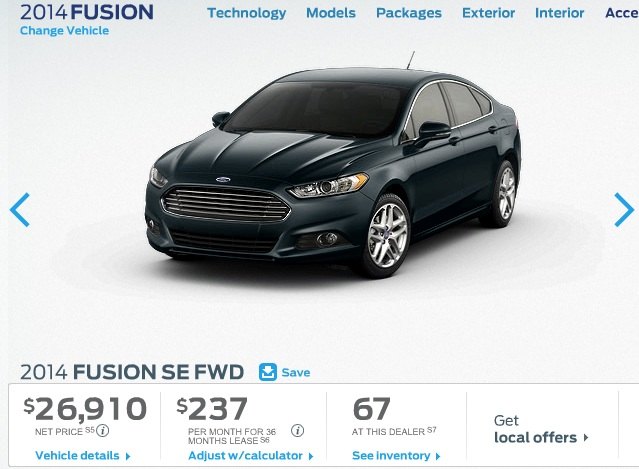#Inventories
Report: Vehicle Supplies Are Climbing Back Up
Vehicle inventories are now approaching the highest levels seen since the summer of 2020. This is according to a report from Cox Automotive, which stated that the month of February opened with the industry seeing an average new vehicle supply of 80 days. However, the figure still doesn’t match the supply averages seen at the start of 2020.
Are Rising EV Inventories Proof Nobody Wants Them?
Those who follow the automotive industry will have undoubtedly noticed that dealer inventories are slowly approaching levels that would have been considered normal before the pandemic. While this is presumably good news for people who have absolutely had it with dealerships marking up their products, some are growing concerned by how much electric vehicle inventories are outpacing their gasoline-reliant counterparts.
Despite elevated fuel prices, aggressive marketing, and most companies vowing to transition toward building electrified automobiles exclusively, America has an EV supply of more than 100 days on dealer lots. That’s about double the average for gasoline vehicles. While it would seem that people are losing interest in battery-driven automobiles, industry experts are claiming that all is not as it seems.
Report: U.S. Automotive Market in Rough Shape
The U.S. light-vehicle market doesn’t appear to be in the best health. While many automakers now opt against issuing monthly sales reports, those that still do are posting some pretty brutal numbers.
This does not bode well for an industry that seemed pretty certain that 2022 would be its recovery year. However, it is on-brand with the slew of announcements made by manufacturers warning about supply constraints and an inability to manufacture at scale. There has also been a growing sense that some consumers may be shunning vehicles that have spent the last several months trading well above what seems rational. Wholesale pricing actually declined by roughly 6 percent since the January record. Though you may not see that represented on dealer lots or even have noticed if it was because last month still saw transactions averaging 14 percent higher than they were last year.
December Auto Sales Still Looking Weak
While the official figures haven’t dropped, just about every outlet tracking new vehicle sales is projecting a significant decline in volume for December 2021. Showrooms have been trending toward the minimalist aesthetic since 2019 with the pandemic kicking things into overdrive as supply bottlenecks nullified practically every manufacturer’s ability to produce anywhere near its normal pace.
Last December was bleak, with sales falling by around 5 percent for the month as the typical transaction price for automobiles set new records. The U.S. market only saw 1.54 million sales, the lowest volume witnessed since December of 2014. But 2021 volumes are shaping up to be decidedly worse. This month is on track to fall by anywhere from 23 to 30 percent with retail sales barely cresting 1 million units as transaction prices for both new and used vehicles surpass all previous metrics.
Bloated Auto Inventories Deflate Slightly
Due to weakening new-vehicle sales, the United States was staring down the barrel of near-record inventories a couple of months ago. Encouraged by the factory to ensure their lots were filled with the latest wares, dealers have watched their margins evaporate as employees and customers drowned in the sea of metal parked out front.
While still uncomfortably high, U.S. inventories started creeping back down in May. By the end of the month, the number of vehicles waiting to be adopted fell below 4 million for the first time since the beginning of 2019.
Amid Rising Inventories and Falling Sales, Dealers Feel Pressure to Literally Stake Out New Ground
Unlike components used in new vehicle assembly, the finished product is not shipped to the customer in a just-in-time manner. There’s usually a healthy amount of dealer-ready vehicles on hand, though recent months has seen inventories slide into obesity. Extended downtime and shift cuts at assembly plants are one result of a bloated supply made worse by falling U.S. sales (Fiat Chrysler’s Windsor Assembly is just the latest victim), but autoworkers aren’t the only ones bearing the brunt.
Figures from the beginning of April shows the inventory problem is only getting worse, with pressure growing on the dealers tasked with selling these vehicles.
Survey Suggests Automotive Auctions Remain a Booming Business
People aren’t buying nearly as many new cars these days, but at least one aspect of the vehicular marketplace is still thriving — auto auctions. Nearly 18 million vehicles were eligible for the auction block in 2016.
While not all of those 18 million vehicles were sold, they still pushed the business beyond the $100 billion mark and made 2016 the best year on record, continuing five years of industry growth.
Thanks largely to swollen used car inventories, 2017 looks to continue that trend. Volume for 2016 was up 2 percent over the year before and has continued to creep upward at the start of 2017.
Nothing Odd About This Sky-high Inventory Buildup, GM Claims
Like floodwaters pooling in a reservoir, unsold General Motors vehicles are getting close to breaching the dam. Not since November 2007 has the automaker held so many vehicles in reserve, though GM claims there’s nothing odd about the buildup.
With several updated models either imminent or on the way, it would make sense for GM to stock up in order to keep dealers and customers happy during production gaps. In this case, however, the numbers don’t seem to add up.
Merrill Lynch: Tesla Sitting On 3K Cars Despite Alleged Scarcity
If you’re still waiting for your Model S to arrive in your driveway, you might not be too pleased to learn there could be 3,000 cars hiding in the back room, thanks to one man seeking knowledge about Tesla’s famed scarcity.
Ford Raises Incentives To Clear Growing Fusion Inventories
As inventories of Ford’s Fusion continue to outpace demand — the result of a second plant brought online last year to keep up with demand for the newly redesigned midsize sedan — the automaker has been raising incentives to move more Fusions out of the lot.
Domestic Automakers' Inventories Soar Past 100 Days' Supply
Inventories of unsold cars and light trucks have swollen to their highest levels since the recession while sales growth in the U.S. market has slowed significantly in the past five months. That combination could mean larger discounts and incentives and lower profit margins in 2014. According to Automotive News, a ll three domestic automakers started February with more than a 100-day supply of unsold vehicles. Industry-wide automakers had 88 days’ worth of vehicles at the start of February, the highest February inventories have been since 2009, when the industry was at its nadir.
AutoNation CEO Concerned About Inventories but Sees 3-5% Growth in '14
Mike Jackson, the CEO of AutoNation, the largest retail dealer group in the United States, told CNBC that the domestic automakers are carrying inordinately large amounts of inventory. Telling Just-Auto that U.S. automakers have a “pretty bizarre” way of calculating inventories that end up justifying high inventory levels, Jackson said, “But if you cut through the bogus calculations and look at dealer inventory for the Detroit Three, it’s over a 100-day supply. And it simply doesn’t need to be there.”
Please, Not Again
Remember the huge parking lots full of unsold cars? That picture was on everybody’s mind as they analyzed new Japanese inventory reports of cars and electronics. According to The Nikkei [sub], the stuff is piling up again, fueling angst about a double dip recession.



























Recent Comments